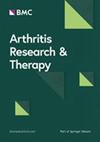羟氯喹剂量依赖性降低糖皮质激素治疗的原发性Sjögren综合征患者发生糖尿病的风险:一项基于全国人群的队列研究
IF 4.9
2区 医学
Q1 Medicine
引用次数: 0
摘要
羟氯喹(HCQ)常用于治疗斯约格伦综合征(SS)。糖皮质激素通常用于治疗原发性SS(pSS),但会破坏糖代谢,增加糖尿病(DM)风险。HCQ可降低系统性红斑狼疮和类风湿性关节炎的糖尿病风险。本研究旨在探讨HCQ和糖皮质激素在系统性红斑狼疮新发糖尿病发病率中的关系。这项以全国人口为基础的队列研究从2006年至2015年的台湾国民健康保险研究数据库中识别出确诊为pSS的患者。研究采用多变量和分层分析、Kaplan-Meier法和Cox比例危险回归法评估单独或联合使用HCQ和糖皮质激素的相关糖尿病风险。在pSS患者(4874名使用HCQ者和2437名未使用HCQ者)中,497名患者在平均4.89年的随访期间患上了DM。多变量分析显示,与不使用HCQ的患者相比,使用HCQ的患者在151-350累积定义日剂量(cDDD)和≥351 cDDD亚组中发生糖尿病的调整危险比(aHRs)明显较低(分别为0.600,95% CI:0.454-0.794和0.326,95% CI:0.246-0.433)。大剂量糖皮质激素(≥ 151 cDDD)与糖尿病风险增加有关(aHR:1.833,95% CI:1.410-2.383)。然而,大剂量 HCQ(> 350 cDDD)可降低这一风险,甚至可降低因使用大剂量糖皮质激素(≥ 151 cDDD)而导致的风险(aHR:0.632,95% CI:0.421-0.948,P < 0.01)。我们的研究表明,接触 HCQ 可显著降低 pSS 患者罹患糖尿病的风险。虽然较高剂量的糖皮质激素与糖尿病风险的增加有关,但同时使用HCQ会以剂量依赖的方式减轻这种风险。本文章由计算机程序翻译,如有差异,请以英文原文为准。
Hydroxychloroquine dose-dependently reduces the risk of incident diabetes in primary Sjögren syndrome patients on glucocorticoids: a nationwide population-based cohort study
Hydroxychloroquine (HCQ) is commonly used to treat Sjögren syndrome (SS). Glucocorticoids, which are commonly applied for managing primary SS (pSS), can disrupt glucose metabolism and increase diabetes mellitus (DM) risk. HCQ reduces DM risk in systemic lupus erythematosus and rheumatoid arthritis. This study aimed to investigate the relationship between HCQ and glucocorticoids in the incidence of new-onset diabetes in pSS. This nationwide population-based cohort study identified patients diagnosed with pSS from the Taiwan’s National Health Insurance Research Database from 2006 to 2015. Multivariate and stratified analyses, Kaplan–Meier method, and Cox proportional hazard regression were used to evaluate DM risk associated with the use of HCQ and glucocorticoid, both individually and in combination. Among pSS patients (4,874 HCQ users and 2,437 HCQ nonusers), 497 patients developed DM over an average follow-up of 4.89 years. Multivariate analysis revealed significantly lower adjusted hazard ratios (aHRs) for DM in HCQ users in the 151–350 cumulative defined daily dose (cDDD) and ≥ 351 cDDD subgroups (0.600, 95% CI: 0.454–0.794 and 0.326, 95% CI: 0.246–0.433, respectively) compared with HCQ nonusers. High-dose glucocorticoids (≥ 151 cDDD) were linked to increased DM risk (aHR: 1.833, 95% CI: 1.410–2.383). However, high-dose HCQ (> 350 cDDD) mitigated this risk, even the risk caused by the use of high-dose glucocorticoids (≥ 151 cDDD) (aHR: 0.632, 95% CI: 0.421–0.948, P < 0.01). Our study demonstrated that HCQ exposure significantly reduces the risk of developing diabetes in patients with pSS. While higher doses of glucocorticoids are associated with an increased diabetes risk, concurrent HCQ use mitigates this risk in a dose-dependent manner.
求助全文
通过发布文献求助,成功后即可免费获取论文全文。
去求助
来源期刊

Arthritis Research & Therapy
RHEUMATOLOGY-
CiteScore
8.60
自引率
2.00%
发文量
261
审稿时长
14 weeks
期刊介绍:
Established in 1999, Arthritis Research and Therapy is an international, open access, peer-reviewed journal, publishing original articles in the area of musculoskeletal research and therapy as well as, reviews, commentaries and reports. A major focus of the journal is on the immunologic processes leading to inflammation, damage and repair as they relate to autoimmune rheumatic and musculoskeletal conditions, and which inform the translation of this knowledge into advances in clinical care. Original basic, translational and clinical research is considered for publication along with results of early and late phase therapeutic trials, especially as they pertain to the underpinning science that informs clinical observations in interventional studies.
 求助内容:
求助内容: 应助结果提醒方式:
应助结果提醒方式:


